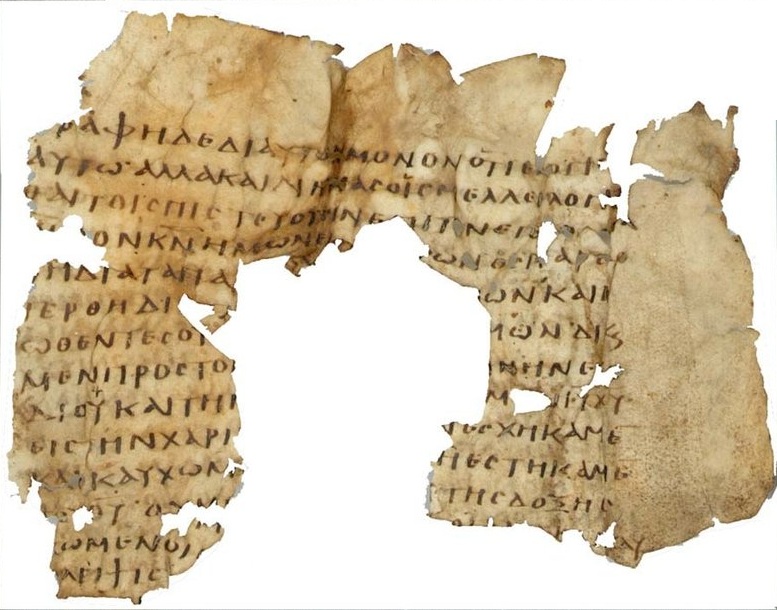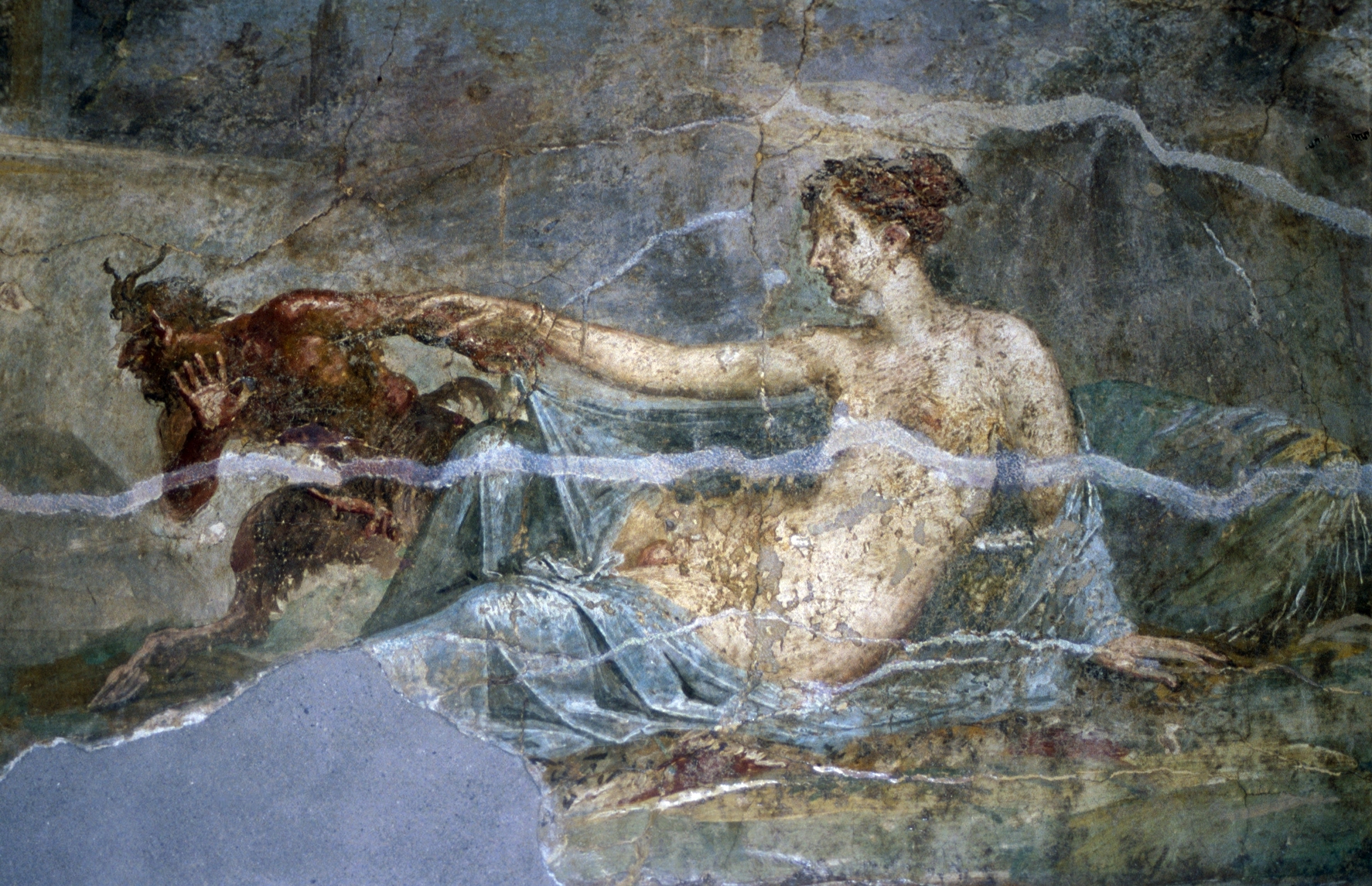|
Kenchreai
Kechries ( el, Κεχριές, rarely Κεχρεές) is a village in the municipality of Corinth in Corinthia in Greece, part of the community of Xylokeriza. Population 238 (2011). It takes its name from the ancient port town Kenchreai or Cenchreae ( grc, Κεγχρεαί), which was situated at the same location. Geography Kechries is situated near a broad bay at the western end of the Saronic Gulf, called Kechries Bay. This coastline forms the easternmost point of the Corinth Fault. The area has frequently felt the impact of seismic activity, which has led to the moderate subsidence of the coastline since ancient times. Kechries is a small village with a school and a church. The number of permanent residents of Kechries is small, and many houses there are used seasonally by owners who reside elsewhere. The Oneia Mountains lie to the south, where a major stone quarry is located, and the village is surrounded by fertile land dedicated to the cultivation of olive, the vine, and fr ... [...More Info...] [...Related Items...] OR: [Wikipedia] [Google] [Baidu] |
Phoebe (biblical Figure)
Phoebe (Feben, Phebe) Koine Greek: ; la">Phœbē, , was a first-century Christian woman mentioned by the Paul of Tarsus">Apostle Paul in his Epistle to the Romans, verses . A notable woman in the church of Kechries, Cenchreae, she was trusted by Paul to deliver his letter to the Romans.Quient, Allison. "Phoebe: Helper or Leader?" ''Arise'', 14 Mar 2013. Christians for Biblical Equality Paul refers to her both as a "servant" or "deacon" (Greek ''diakonos'') and as a helper or patron of many (Greek ''prostatis''). This is the only place in the New Testament where a woman is specifically referred to with these two distinctions. Paul introduces Phoebe as his emissary to the church in Rome and, because they are not acquainted with her, Paul provides them with her credentials. Background Paul's letter to the Romans was written in Corinth sometime between the years 56 and 58, in order to solicit support for an anticipated missionary journey to Spain. [...More Info...] [...Related Items...] OR: [Wikipedia] [Google] [Baidu] |
Greece
Greece,, or , romanized: ', officially the Hellenic Republic, is a country in Southeast Europe. It is situated on the southern tip of the Balkans, and is located at the crossroads of Europe, Asia, and Africa. Greece shares land borders with Albania to the northwest, North Macedonia and Bulgaria to the north, and Turkey to the northeast. The Aegean Sea lies to the east of the mainland, the Ionian Sea to the west, and the Sea of Crete and the Mediterranean Sea to the south. Greece has the longest coastline on the Mediterranean Basin, featuring thousands of islands. The country consists of nine traditional geographic regions, and has a population of approximately 10.4 million. Athens is the nation's capital and largest city, followed by Thessaloniki and Patras. Greece is considered the cradle of Western civilization, being the birthplace of democracy, Western philosophy, Western literature, historiography, political science, major scientific and mathematical p ... [...More Info...] [...Related Items...] OR: [Wikipedia] [Google] [Baidu] |
Epitaph
An epitaph (; ) is a short text honoring a deceased person. Strictly speaking, it refers to text that is inscribed on a tombstone or plaque, but it may also be used in a figurative sense. Some epitaphs are specified by the person themselves before their death, while others are chosen by those responsible for the burial. An epitaph may be written in prose or in poem verse. Most epitaphs are brief records of the family, and perhaps the career, of the deceased, often with a common expression of love or respect—for example, "beloved father of ..."—but others are more ambitious. From the Renaissance to the 19th century in Western culture, epitaphs for notable people became increasingly lengthy and pompous descriptions of their family origins, career, virtues and immediate family, often in Latin. Notably, the Laudatio Turiae, the longest known Ancient Roman epitaph, exceeds almost all of these at 180 lines; it celebrates the virtues of an honored wife, probably of a consul. S ... [...More Info...] [...Related Items...] OR: [Wikipedia] [Google] [Baidu] |
Epistle To The Romans
The Epistle to the Romans is the sixth book in the New Testament, and the longest of the thirteen Pauline epistles. Biblical scholars agree that it was composed by Paul the Apostle to explain that salvation is offered through the gospel of Jesus Christ. Romans was likely written while Paul was staying in the house of Gaius in Corinth. The epistle was probably transcribed by Paul's amanuensis Tertius and is dated AD late 55 to early 57. Consisting of 16 chapters, versions with only the first 14 or 15 chapters circulated early. Some of these recensions lacked all reference to the original audience of Christians in Rome making it very general in nature. Other textual variants include subscripts explicitly mentioning Corinth as the place of composition and name Phoebe, a deacon of the church in Cenchreae, as the messenger who took the epistle to Rome. Prior to composing the epistle, Paul had evangelized the areas surrounding the Aegean Sea and was eager to take the gospel fa ... [...More Info...] [...Related Items...] OR: [Wikipedia] [Google] [Baidu] |
Nazirite
In the Hebrew Bible, a nazirite or a nazarite ( he, נָזִיר ''Nāzīr'') is one who voluntarily took a vow which is described in . "Nazarite" comes from the Hebrew word ''nazir'' meaning "consecrated" or "separated". Those who put themselves under a Nazirite vow do so by adding unto themselves a degree of sanctity, as it says: "Until the time is completed, etc., he shall be holy." A person who puts himself under a Nazirite vow without designating how long he intends to remain as such, he is obligated in all that pertains to Nazirite strictures for a period of thirty days. This vow required the person to observe the following strictures: * Abstain from all wine and anything else made from the grape vine plant, such as cream of tartar, grape seed oil, etc. (Traditional rabbinic authorities state that all other types of alcohol were permitted.) * Refrain from cutting the hair on one's head; but to allow the locks of the head's hair to grow. * Not to become ritually impure by con ... [...More Info...] [...Related Items...] OR: [Wikipedia] [Google] [Baidu] |
Paul The Apostle
Paul; grc, Παῦλος, translit=Paulos; cop, ⲡⲁⲩⲗⲟⲥ; hbo, פאולוס השליח (previously called Saul of Tarsus;; ar, بولس الطرسوسي; grc, Σαῦλος Ταρσεύς, Saũlos Tarseús; tr, Tarsuslu Pavlus; la, Paulus Tarsensis AD), commonly known as Paul the Apostle and Saint Paul, was a Apostles in the New Testament, Christian apostle who spread the Ministry of Jesus, teachings of Jesus in the Christianity in the 1st century, first-century world. Generally regarded as one of the most important figures of the Apostolic Age, he founded Early centers of Christianity, several Christian communities in Asia Minor and Europe from the mid-40s to the mid-50s AD. According to the New Testament book Acts of the Apostles, Paul was a Pharisees, Pharisee. He participated in the Persecution of Christians in the Roman Empire, persecution of early Disciple (Christianity), disciples of Jesus, possibly Hellenistic Judaism, Hellenised diaspora Jews converte ... [...More Info...] [...Related Items...] OR: [Wikipedia] [Google] [Baidu] |
Pan (god)
In ancient Greek religion and mythology, Pan (; grc, Πάν, Pán) is the god of the wild, shepherds and flocks, rustic music and impromptus, and companion of the nymphs. He has the hindquarters, legs, and horns of a goat, in the same manner as a faun or satyr. With his homeland in rustic Arcadia, he is also recognized as the god of fields, groves, wooded glens, and often affiliated with sex; because of this, Pan is connected to fertility and the season of spring. In Roman religion and myth, Pan's counterpart was Faunus, a nature god who was the father of Bona Dea, sometimes identified as Fauna; he was also closely associated with Sylvanus, due to their similar relationships with woodlands. In the 18th and 19th centuries, Pan became a significant figure in the Romantic movement of western Europe and also in the 20th-century Neopagan movement. Origins Many modern scholars consider Pan to be derived from the reconstructed Proto-Indo-European god ''*Péh₂usōn'', wh ... [...More Info...] [...Related Items...] OR: [Wikipedia] [Google] [Baidu] |
Dionysus
In ancient Greek religion and myth, Dionysus (; grc, Διόνυσος ) is the god of the grape-harvest, winemaking, orchards and fruit, vegetation, fertility, insanity, ritual madness, religious ecstasy, festivity, and theatre. The Romans called him Bacchus ( or ; grc, Βάκχος ) for a frenzy he is said to induce called ''bakkheia''. As Dionysus Eleutherios ("the liberator"), his wine, music, and ecstatic dance free his followers from self-conscious fear and care, and subvert the oppressive restraints of the powerful. His '' thyrsus'', a fennel-stem sceptre, sometimes wound with ivy and dripping with honey, is both a beneficent wand and a weapon used to destroy those who oppose his cult and the freedoms he represents. Those who partake of his mysteries are believed to become possessed and empowered by the god himself. His origins are uncertain, and his cults took many forms; some are described by ancient sources as Thracian, others as Greek. In Orphic religion, he ... [...More Info...] [...Related Items...] OR: [Wikipedia] [Google] [Baidu] |
Poseidon
Poseidon (; grc-gre, Ποσειδῶν) was one of the Twelve Olympians in ancient Greek religion and myth, god of the sea, storms, earthquakes and horses.Burkert 1985pp. 136–139 In pre-Olympian Bronze Age Greece, he was venerated as a chief deity at Pylos and Thebes. He also had the cult title "earth shaker". In the myths of isolated Arcadia he is related with Demeter and Persephone and he was venerated as a horse, however, it seems that he was originally a god of the waters.Seneca quaest. Nat. VI 6 :Nilsson Vol I p.450 He is often regarded as the tamer or father of horses, and with a strike of his trident, he created springs which are related to the word horse.Nilsson Vol I p.450 His Roman equivalent is Neptune. Poseidon was the protector of seafarers, and of many Hellenic cities and colonies. Homer and Hesiod suggest that Poseidon became lord of the sea when, following the overthrow of his father Cronus, the world was divided by lot among Cronus' three sons; Zeus was ... [...More Info...] [...Related Items...] OR: [Wikipedia] [Google] [Baidu] |
Asclepius
Asclepius (; grc-gre, Ἀσκληπιός ''Asklēpiós'' ; la, Aesculapius) is a hero and god of medicine in ancient Greek religion and mythology. He is the son of Apollo and Coronis, or Arsinoe, or of Apollo alone. Asclepius represents the healing aspect of the medical arts; his daughters, the "Asclepiades", are: Hygieia ("Health, Healthiness"), Iaso (from ἴασις "healing, recovering, recuperation", the goddess of recuperation from illness), Aceso (from ἄκεσις "healing", the goddess of the healing process), Aegle (the goddess of good health) and Panacea (the goddess of universal remedy). He has several sons as well. He was associated with the Roman/Etruscan god Vediovis and the Egyptian Imhotep. He shared with Apollo the epithet ''Paean'' ("the Healer"). The rod of Asclepius, a snake-entwined staff, (similar to the caduceus) remains a symbol of medicine today. Those physicians and attendants who served this god were known as the Therapeutae of Asclepius. ... [...More Info...] [...Related Items...] OR: [Wikipedia] [Google] [Baidu] |



.jpg)



